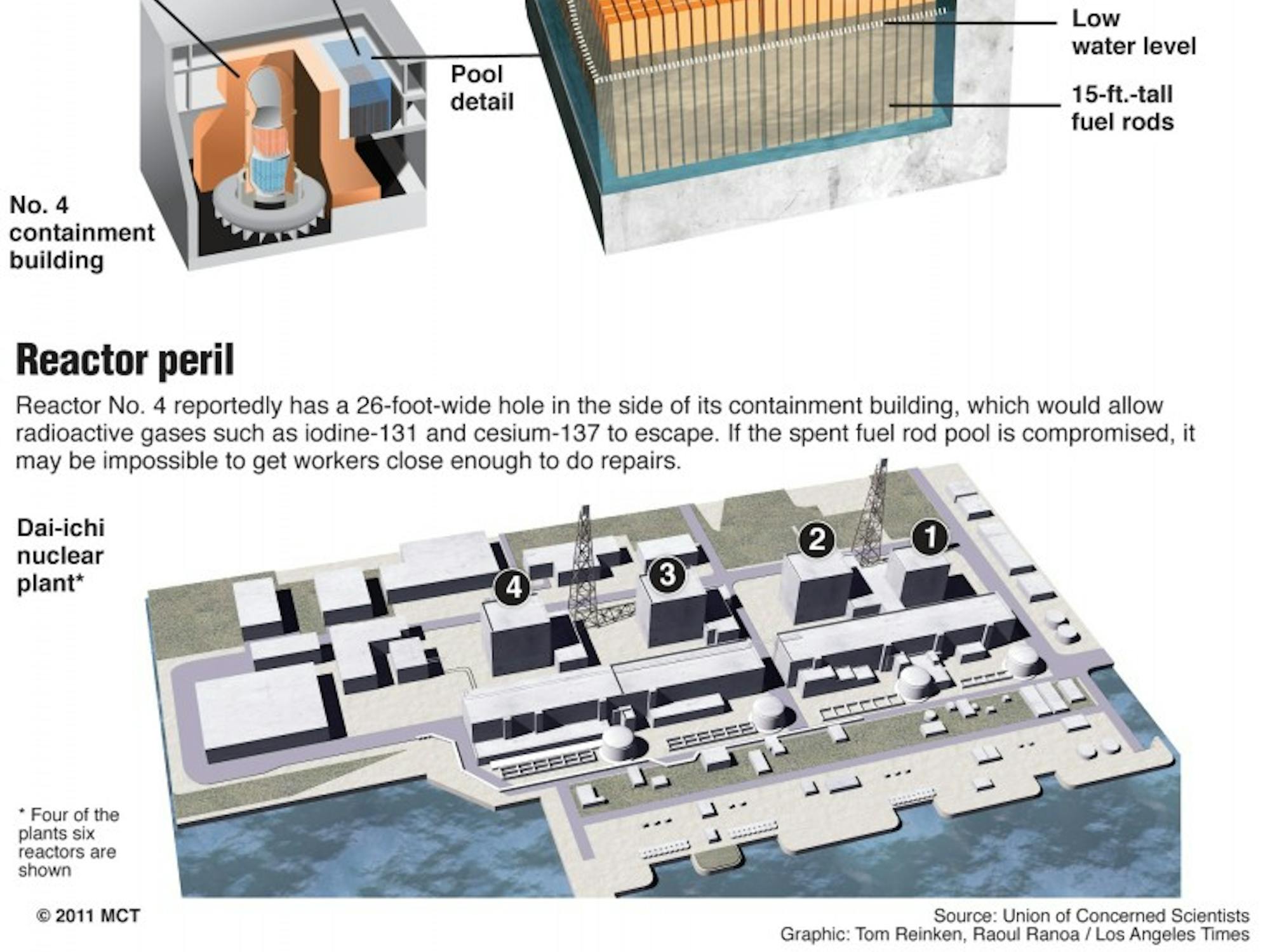It’s impossible to ignore the flurry of opinions yet difficult to discern the facts of the current nuclear crisis. What is clear is the massive impact of the recent earthquakes and tsunami damage on Japan’s multiple nuclear reactors, which are still steaming radioactive material.
Updates frequently tell of the increasingly dangerous near or partial meltdown conditions and the brave workers taking shifts in full gear, risking their health and lives.
Objective analysis of the costs and benefits of engaging in nuclear proliferation reveals these initiatives are neither cheap, clean nor safe. Since the 2005 Energy Policy Act, the federal government has doled out tens of billions of dollars in tax breaks, research and loans for up to 80 percent of project costs. Most plants are privately owned and operated, but our government is heavily involved in the industry.
Mining of uranium itself is hazardous, uses toxic radon gas among other chemicals, and when it first began in the United States, led to serious increases in lung cancer among miners. Uranium enrichment, transport of other required materials and chemicals and the process of creating steam with the fuel rods is all resource (fuel, fresh water etc.) intensive and adds to dangerous conditions.
While our three operating nuclear plants in Michigan aren’t at much risk for detrimental natural disaster, many in the nation are located on or near fault lines. Particularly of concern are two plants in California, the Diablo Canyon and San Onofre nuclear plants. Approximately 8 million people live within 50 miles of those two plants, in an area that’s famously been awaiting the next “big one” for over a hundred years.
Research of our national stance on nuclear energy reveals more of those darn revolving doors between the privately owned and operated energy companies and the government. Policies that heavily subsidize construction, operation and waste removal are standard and multiple government officials have moved on to higher-paying positions with nuclear utility companies.
Virtually all U.S. nuclear facilities were built or initiated in the mid-to-late-1970s. The dated infrastructure hypothetically undergoes rigorous review before relicensing, but since most are up for the extension soon, the process has been “streamlined.”
A 2009 story from The Nation, titled “Zombie Nuke Plants,” exposed crumbling conditions in multiple plants, including previously unreported toxic tritium leakages from the containment pools. That brings us to one of the most contentious problems – waste.
Radiated materials, including spent fuel rods, must be secured and stored for tens, sometimes hundreds of thousands of years, before the radiation comes to what’s been deemed “safe” levels.
Part of the cozy relationship between the industry and the feds is the shouldering of waste, taken on by the government through a negligible tax. Perhaps you’ve heard of Yucca Mountain, the site in Nevada, once to be the stronghold of all our hazardous waste. The project was tabled in 2009 and remains unaddressed, which results in each plant storing sealed waste underwater or in dry casks. No matter the solution, any radioactive waste will eventually degrade the container it’s held in, which could lead to a disaster.
A most notable response came from the Rupert Murdoch-owned Wall Street Journal, which understated possible effects of the explosions in Japan. In a column written Wednesday, Holman W. Jenkins Jr., ended his summary of events by stating many exaggerations. The biggest and most offensive of these being “environmentalists…who haven’t opted for escapism…have quietly recognized that the only alternative to fossil energy is nuclear.”
This statement is blatantly false. While there is a common recognition of the need to combine sources in our energy decent, there is by no means an acceptance that nuclear is the only alternative, let alone an environmentally acceptable option.
Clearly, from mining to waste storage, there are serious risks to consider. Let’s think of the old American NIMBY-ism. Not in my backyard, fine, but true evaluation of the expanse of any possible accident expands the concept of “backyard” to mean essentially the entire contiguous 48 states.
The best solution is not black or white, a yes or no. Nuclear plants and materials are in operation, and they do emit less CO2 than coal plants. The materials are at hand, but that does not mean continued proliferation is the answer. A cohesive combination is the best and most widely accepted solution.
Maybe diverting some of the billions that go to research and development of nuclear power to making solar panels more affordable is a wise choice. Increase awareness of the possible solutions, and consider ways to reduce use. The No. 1 change has to be with us, the citizens, bill payers, utility users and consumers.








